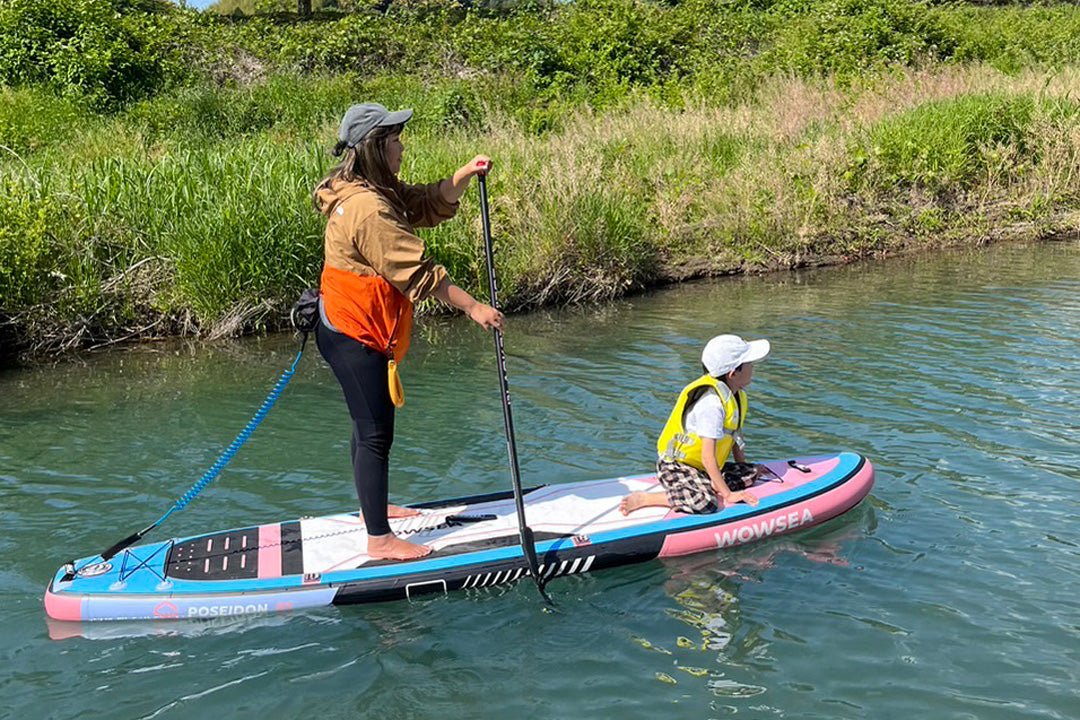
Where to attach sup leash? and Is a SUP leash necessary?
The vital importance of wearing a SUP leash: ensuring safety and peace of mind on the water!
Picture yourself on the water, gliding gracefully on a stand-up paddleboard, basking in the warm sun and refreshing breeze. It's the ideal day to start an exciting journey. But before you overlook the importance of your trusted companion, the SUP Leash, allow me to explain why it's an absolute game changer.
No matter your level of experience in paddleboarding, there may come a time when you find yourself in a precarious position. Unexpected circumstances can arise, leaving you feeling caught off guard. As fatigue sets in, you may find yourself disoriented, far from shore, or struggling against a relentless current. It is during these critical moments that the SUP Leash becomes an indispensable lifeline. By securely attaching your paddleboard to you, it serves as a crucial flotation device that can make all the difference between life and death. Take a moment to truly grasp the significance of this. I apologize if this statement seems unsettling, but it is imperative to comprehend the seriousness of the situation.
Even in seemingly benign conditions, a calm paddle can quickly turn into a wild chase without a foot leash. Breezes, small waves, and even a slight current can quickly blow your paddleboard out of your reach. Imagine swimming desperately trying to keep up with the elusive paddleboard as it drifts further away with each passing second - certainly not the tranquil experience you thought it would be, is it?
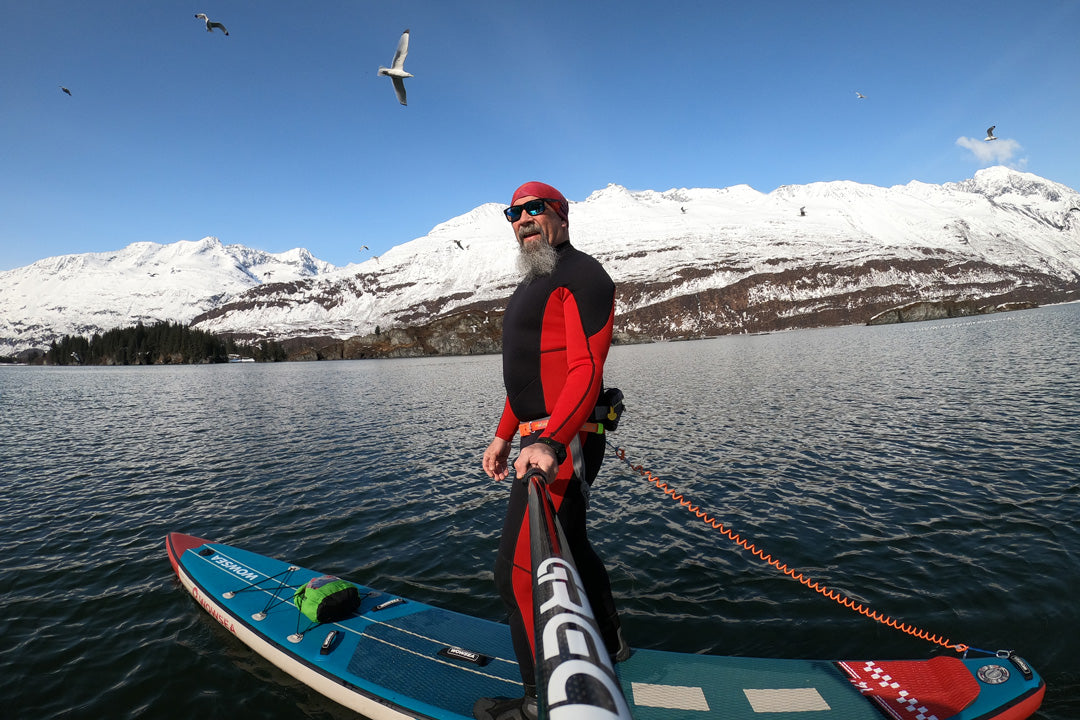
Let's break it down to Two basic reasons why wearing a SUP leash is absolutely essential.
First, it's about your safety. Think of it as a device that is tethered to a life-saving flotation device in the event of an emergency. The foot leash ensures that your paddleboard stays within reach and provides you with a vital lifeline when circumstances change unexpectedly.
Secondly, the safety of others with whom you share the water is at stake. By keeping your paddleboard securely attached to you, a foot leash prevents it from becoming a dangerous projectile, tilting in the surf, drifting aimlessly around the lake, or posing a threat near the shore. After all, SUP boards aren't inconsequential objects-they're sturdy and can pose a significant risk to others when left unchecked.
Before setting off on your upcoming paddleboarding expedition, always remember to secure the foot leash. It's more than just a mere accessory; it's the crucial element for your safety and tranquility. Don't allow your paddleboard to slip away – keep it within reach, maintain control, and ensure a seamless adventure.
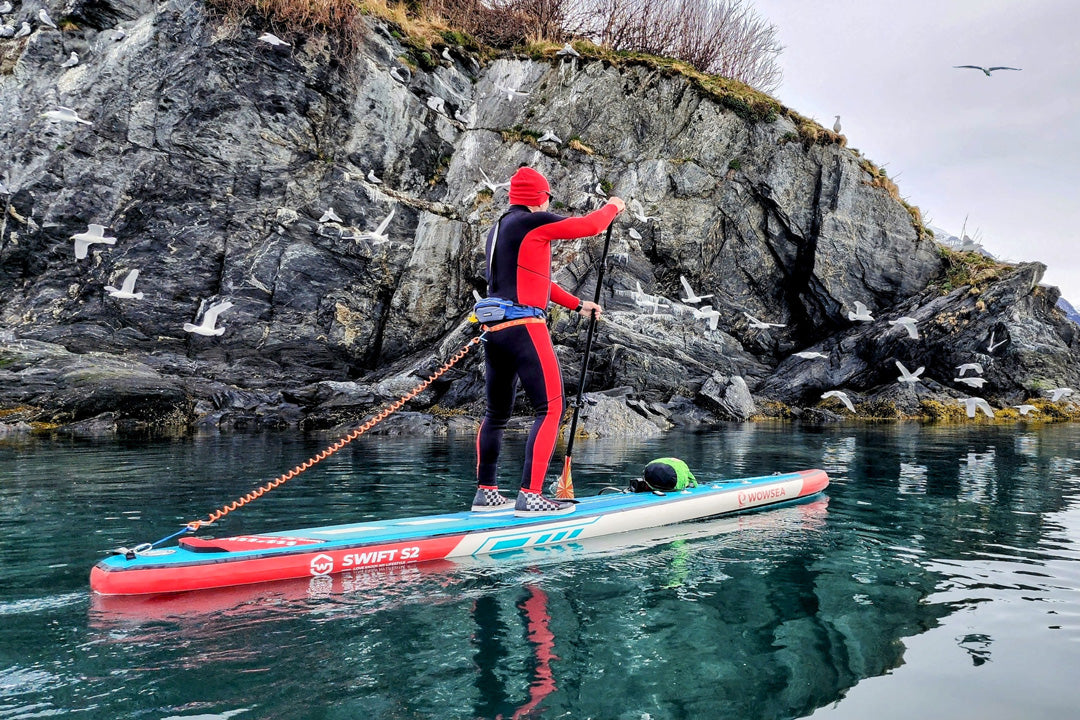
How to properly use a leash
Explore the various SUP leash options for the ultimate paddleboard experience!
When it comes to attachment points, you have two main options: around the ankle or just below the knee (i.e. calf). But that's not all-you can also choose between coiled or straight leash versions. Think carefully, however, as there's more to consider when it comes to ensuring your safety on the water.
Now, it's worth noting that calf and ankle attachment points aren't the only options available, especially when dealing with the wild waters of a raging whitewater river. In those intense situations, the option of a waist belt and release system is highly recommended. This ensures that the release mechanism can be easily utilized in an emergency. While the WOWSEA does not currently come with a lumbar system, keep this in mind for completing your adrenaline-pumping river adventures.
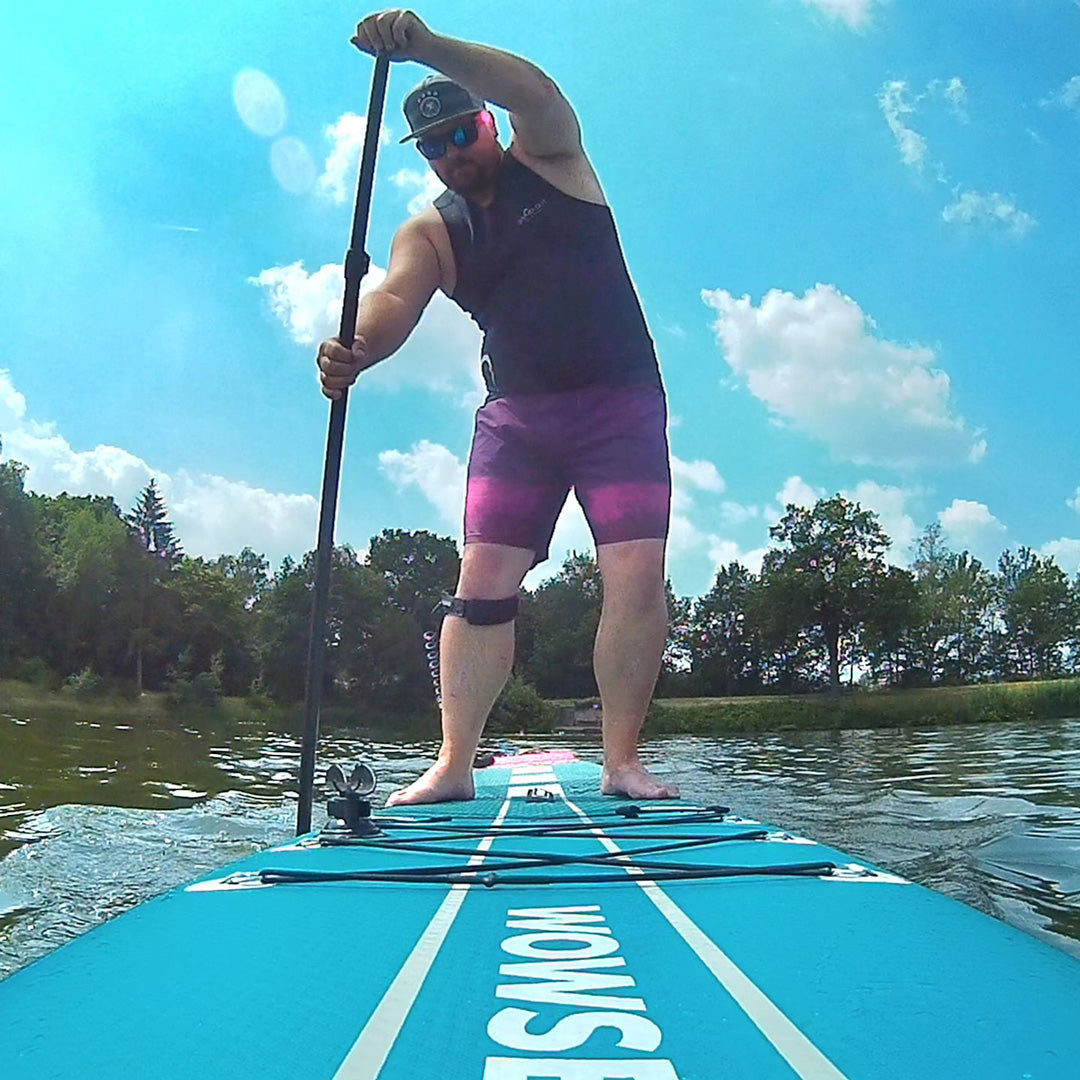
So why would you choose calves over ankles, or straight over coiled and vice versa? Let us break it down for you.
Surfers who like to walk on their boards while surfing usually prefer calf attachment points. It keeps the leash away from their feet, reduces the risk of tangles and improves their agility. This style is also popular in other SUP disciplines because, let's face it, reaching the calf is sometimes easier than reaching the ankle. Additionally, by securing the leash around the calf, it is more comfortable to move your feet on the paddle board. For speed racers, it's a game changer because it keeps the leash out of the water, minimizing drag and maximizing speed.
However, some may find that the calf attachment puts pressure on the knee joint when falling or pulls on the calf muscles and causes discomfort. On the positive side, releasing the calf leash is a breeze because it is within easy reach.
On the other hand, most surfers rely heavily on the ankle attachment point. It is preferred for those exciting moments of being pulled by the waves. Ankle attachments provide comfort and allow you to utilize the full power of your legs to easily pull the board back to you. Say goodbye to embarrassing knee strains or calf muscle pulls. However, beware of possible twisting of the ankle when extra force is unexpectedly applied by the leash.
For flatwater paddlers, the choice of ankle and calf attachments depends on personal preference and daily habits. When cruising on calmer water, it is common practice to securely tie the ankle rope around the ankle. That said, keep in mind that it may be slightly more challenging to release the ankle attachment straps when needed.
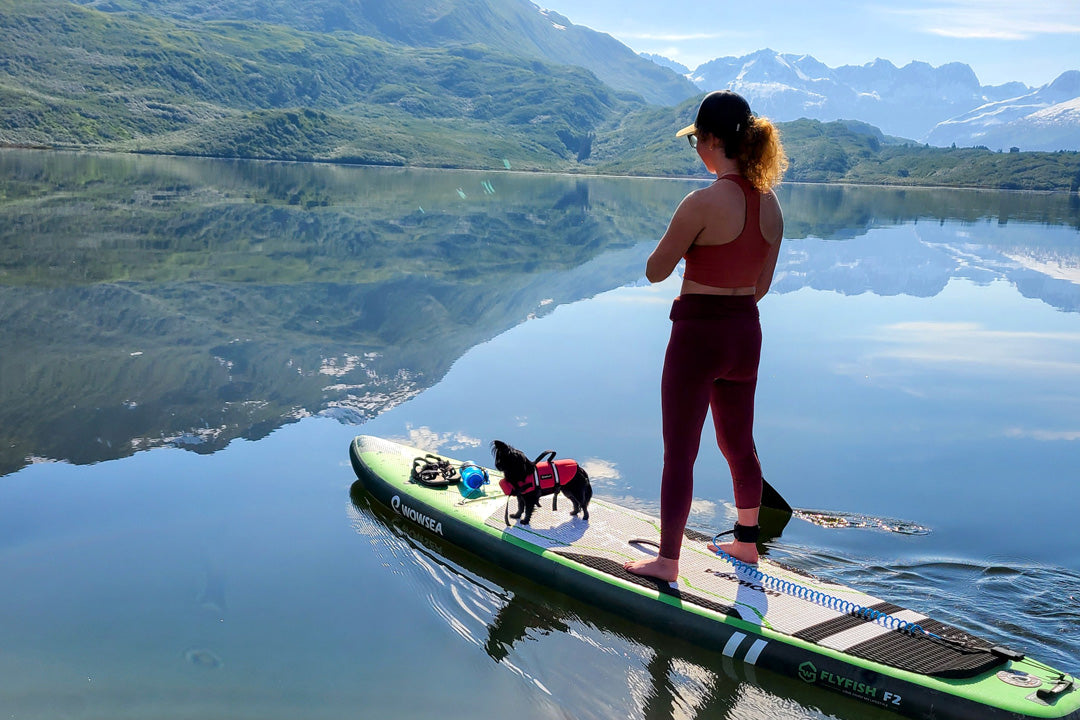
Now, let's discuss the leash itself - rolled or unrolled, that is. Although the WOWSEA paddleboard package comes with a rolled leash, the choice of straight or rolled leash usually depends on your preferred paddling style.
When surfing, it is important to keep the board at a safe distance from you. Therefore, a straight foot leash that perfectly matches the length of your board will ensure that you are protected when the waves come crashing in. On the other hand, a coiled leash is the best option for racing paddle boarders. It keeps the leash out of the water, minimizing drag and allowing you to quickly get back into the heat of the race. Coiled leashes are also great for recreational paddling because they prevent annoying tangles from forming between your feet and other gear.
In conclusion, choosing the right SUP leash is critical to a safe and enjoyable paddleboarding experience. Whether you choose an ankle or calf attachment, a coiled or straight leash, it ultimately depends on your paddling style, preferences, and the conditions you will encounter. Recreational paddlers may prefer a SUP leash that is flexible and reduces tangles, while surfers choose a foot leash that is comfortable and easy to retrieve from the board. Coiled foot leashes minimize drag and tangles, making them ideal for racing and flatwater paddling, while straight leashes provide distance and protection in the surf. By taking these factors into consideration and finding the perfect SUP leash for your needs, you can embark on thrilling water adventures with confidence, knowing that you're securely attached to your board and ready to embrace the excitement that awaits on the water. So choose wisely and keep paddling, Love & Enjoy your SUP lifestyle!
Recent Articles
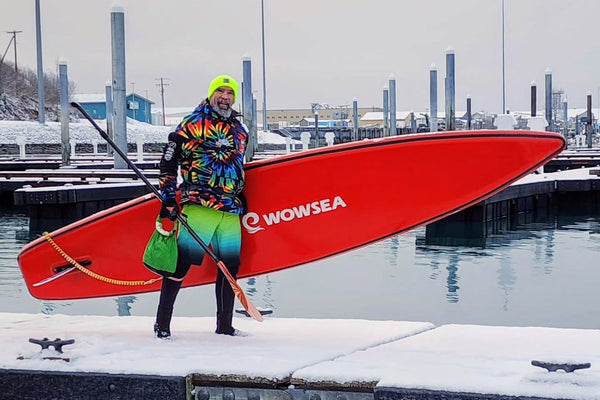
Tips for Keeping and Using Inflatable Paddle Boards in Winter
Let's talk about how to use and maintain inflatable stand-up paddleboards (SUPs) in winter. We’ll cover equipment checks, how to dress properly, choosing the right safety gear, and paddling techniques. With the right preparation and exploration, you can create unforgettable water adventure memories this winter!
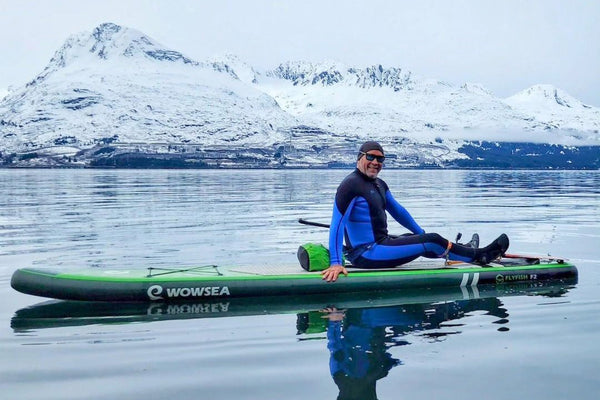
Cold Weather, Warm Spirits: Inflatable Paddle Boards' Winter Wonderland
By navigating icy waters on your inflatable board with a focus on safety, you can discover the profound silence and stark beauty of the winter waterways, all while keeping fitness levels high and spirits invigorated.
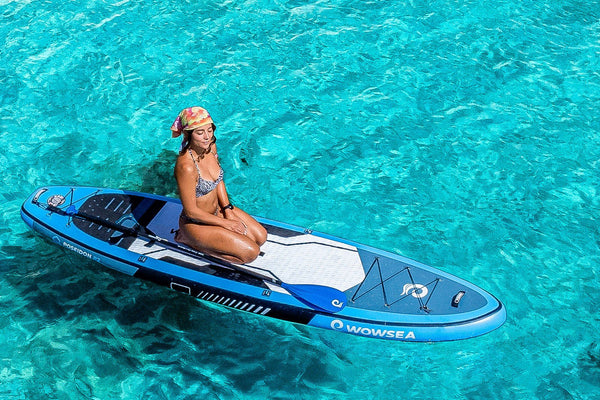
How to Incorporate Meditation into Your SUP boarding Routine
SUP boarding is not merely a recreational pursuit but a holistic journey—where the water becomes a canvas for meditation, and each stroke becomes a brushstroke in the masterpiece of mindful living.
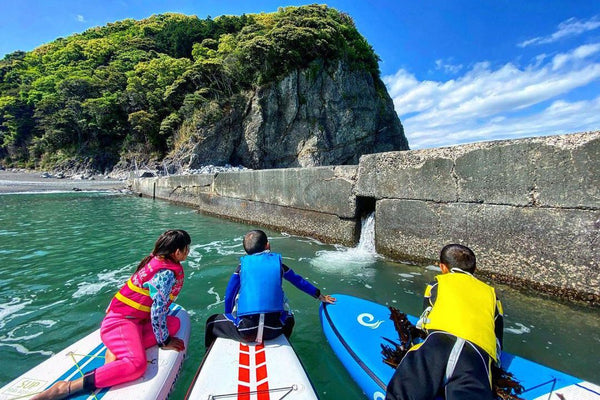
A Comprehensive Guide to Family Stand-Up Paddleboarding Adventures
From choosing the perfect board and accessories, overcoming challenges, and building confidence in young paddlers to capturing memories through photography and exploring family-friendly paddleboarding destinations, the WOWSEA SUP experience is rich with opportunities for bonding, learning, and creating cherished memories.

How to have an overnight Multi-Day SUP Trips and Camping (2)
The Complete Guide to Paddleboard Travel and Camping: Pack your gear, set up camp, and get ready to create lifelong memories on the water with WOWSEA SUP boards.
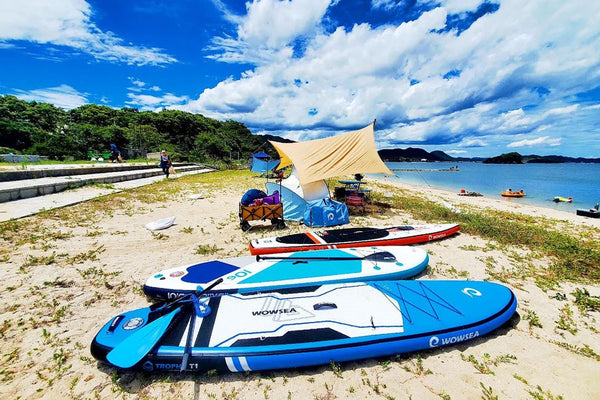
How to have an overnight Multi-Day SUP Trips and Camping (1)
The allure of multi-day trips and camping with SUP boards lies in the freedom to explore remote and untouched locations. This opens up a world of possibilities for adventurers who crave solitude, tranquility, and an intimate connection with nature.
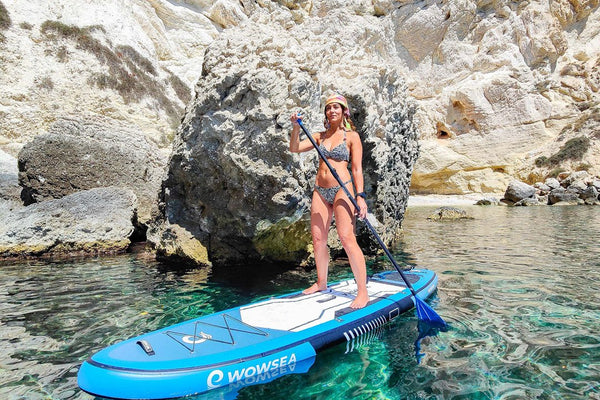
Exploring the Beauty of Nature with WOWSEA Inflatable Paddle Board: A Guide for Tourists
With the WOWSEA Inflatable Paddle Board, tourists can embark on unforgettable adventures and experience the beauty of nature in a whole new way.

How to Paddleboard with a Group - Games and Activities
Group paddleboarding games and activities are a fantastic way to bond with others, have fun, and make the most of your time on the water. They provide opportunities for friendly competition, teamwork, and exploration, enhancing the overall experience of your paddleboarding adventure.

Share